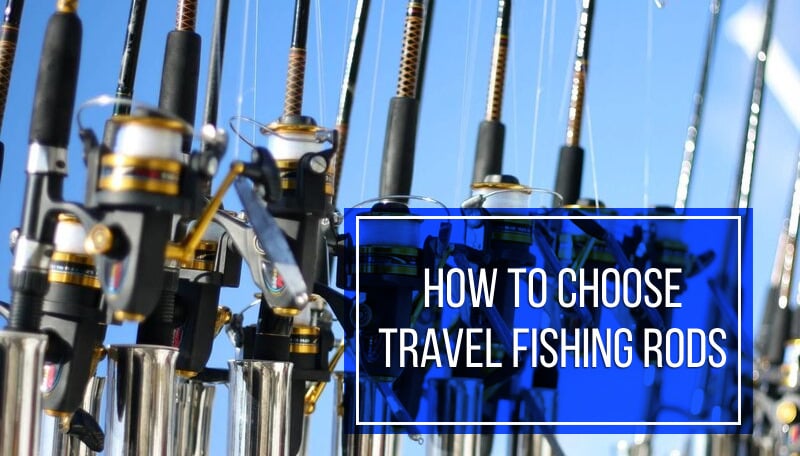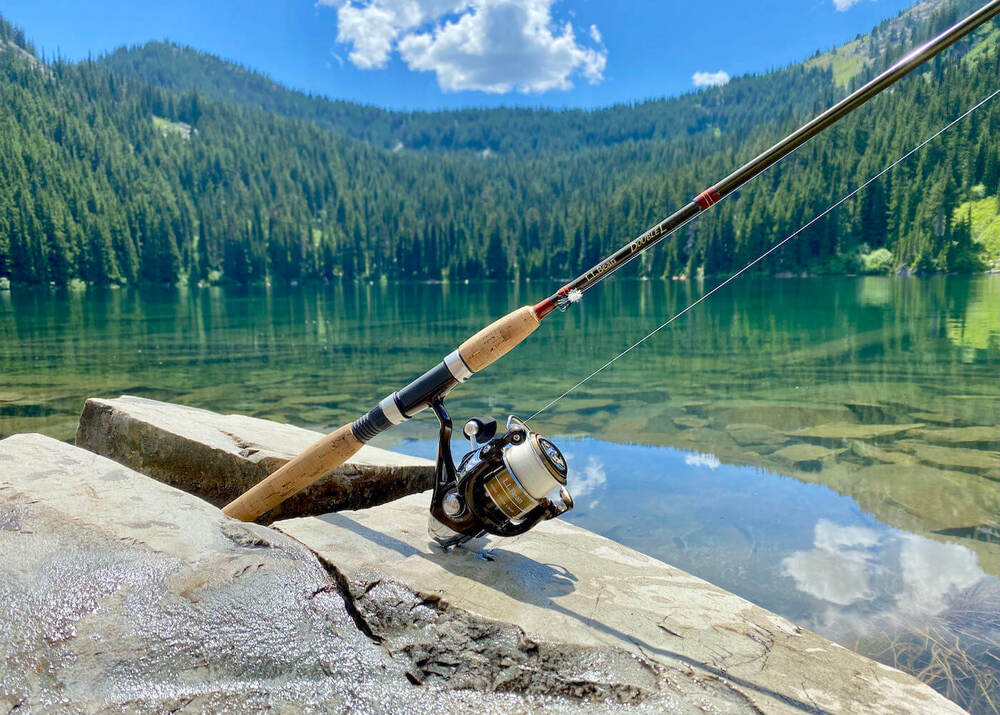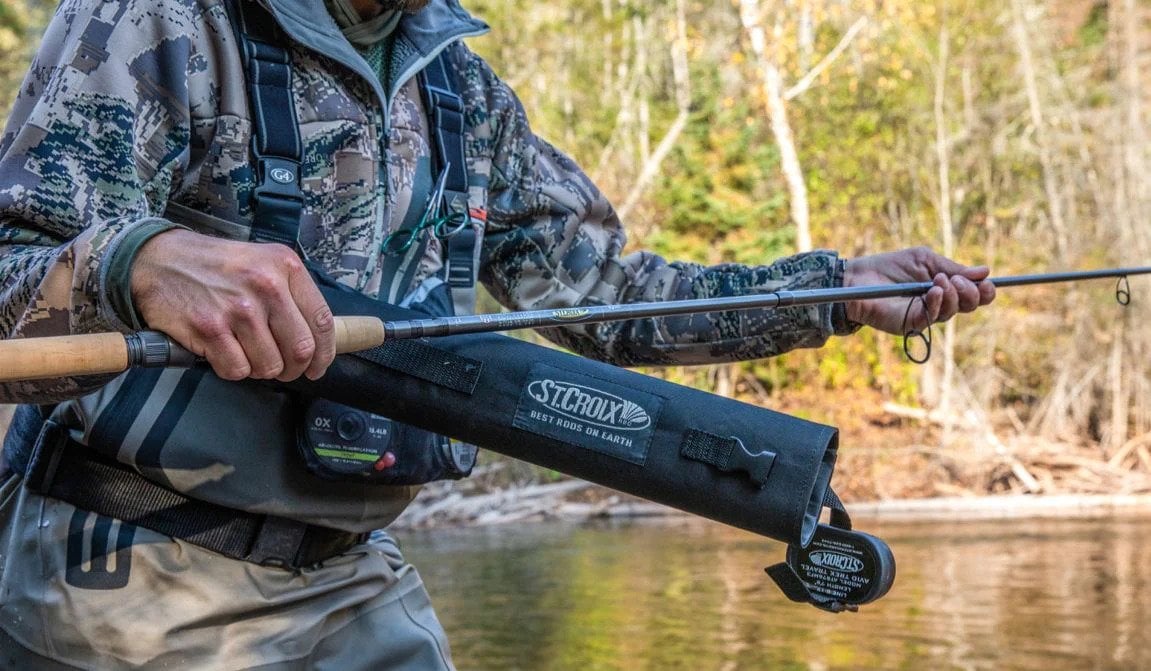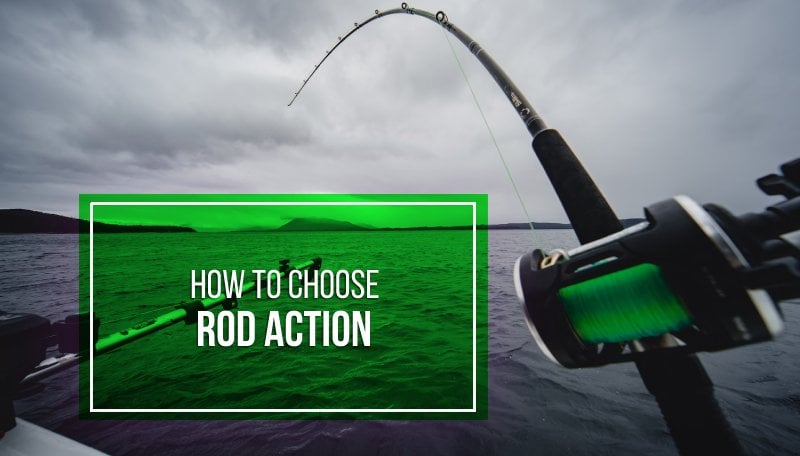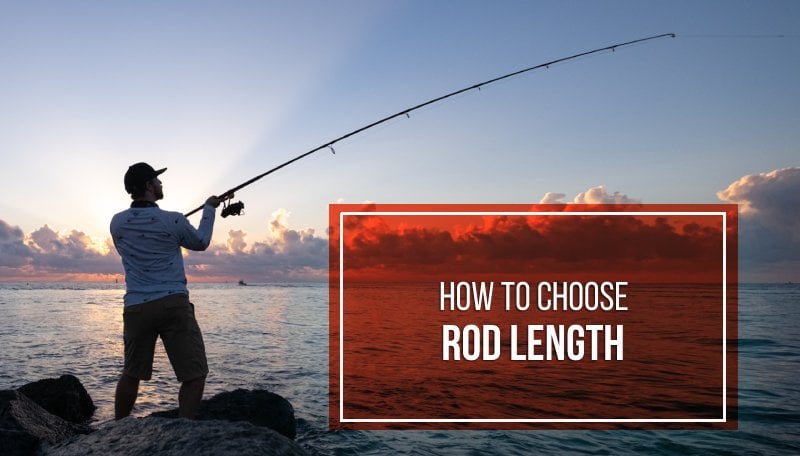Last Updated on
Are you an avid angler with a serious case of wanderlust? If so, there is only one way to cure this malady: give in and venture off on a fishing adventure. When you will start gathering your things, you might discover that everything packs well except for your main companion. The thing is, not all fishing rods are suitable for international trips. But fret not, there is an easy solution to this conundrum. Travel fishing rods offer everything you might need from a rod in a transportation-friendly package. In this article, we explore everything there is to know about travel fishing rods and explore how to choose the One.
Table of Contents
Why Choose Travel Fishing Rods
Factors to Consider
Length
Weight
Number of Pieces
Material
Choosing Tips
Conclusion
FAQs
Why Choose a Travel Fishing Rod?
Let’s say you’re planning a faraway trip, somewhere too far for cars and trains to bring you. You’re committed to your trusty one- or two-piece rod and are determined to show it the world. The only way for this to happen will be for you to buy a full hard-sided carrying rod case (8, 9 feet long?) and pay a small fortune for the airline to check this baggage, if at all. Not all of them will, and there is no way to pass a full-size rod for hand luggage. So it’s not a manufacturer’s trick to sell you items you don’t need. It’s a harsh reality. Or not so harsh, if you opt for dedicated travel fishing rods. They are designed to break down into smaller pieces or telescope, making them much easier to pack and transport. If you are nimble enough, you can carry it as hand baggage and spare yourself the worries of its safety.
The convenience of fishing rods extends far beyond air travel, which makes them perfect companions for all sorts of journeys. For train travelers, these compact rods eliminate the need to navigate crowded carriages with unwieldy full-sized equipment. If you don’t like hassle (and who does), then it’s a very solid solution. Road trips become more enjoyable as well, as travel rods can be easily stored in a car’s trunk or rest on back seats without occupying much space. Hikers and backpackers benefit immensely from travel rods’ lightweight design and portability, enabling their passion for fishing to guide them without being weighed down. And, if you are one of those urban fishers, travel rods handle themselves well in public transport as well. In short, it’s a well-rounded, versatile option you can’t go wrong with.
Choosing the Perfect Travel Fishing Rod: Factors to Consider
So, how do you pick the best travel fishing rod for your international escapades? Here are some key factors to consider:
1. Length
To dispel any potential doubts, travel rods don’t sacrifice length for portability. They simply don’t need to: you can either assemble it from different pieces or telescope it out. In all other aspects, choosing a travel fishing rod isn’t that different from a regular rod. Determine the ideal length for your travel rod based on your target species, fishing techniques, and travel requirements. Just keep in mind that you won’t necessarily have to sacrifice performance for portability: many travel rods perform just as well as their full-sized counterparts.
2. Weight
Weight always matters, and when it comes to portability, it matters even more. Lighter rods are generally more comfortable to use for extended periods and easier to transport. However, you’ll need to balance weight with durability and power, especially if you’re targeting larger fish.
3. Number of Pieces
There are two types of travel fishing rods: composite and telescopic. Multi-piece rods offer better performance and a more secure connection, but you’ll have to go through the assembly and disassembly process every time. Telescopic rods, on the other hand, are more comfortable in that regard but may sacrifice some sensitivity and durability. Decide which design best fits your needs, and consider how easily you want your rod to be assembled and disassembled.
4. Material
The material used to construct your travel rod will impact its weight, durability, sensitivity, and performance. The pool of materials is the same as usual, so you can choose between the increased robustness of fiberglass, the lightweight sensitivity of graphite or the costly versatility of composite rods.
Expert Tips for Choosing the Best Travel Fishing Rod
Now that we’ve covered the basics, here are some tips to help you make the final decision:
- Assess your target species and fishing techniques: Different rods excel in different situations. Nothing can spoil a trip like finding out your rod isn’t sturdy enough to handle the fish you wanted. It’s not an hour’s trip home, after all, so prepare as well as you can.
- Test the rod’s action and power: The action (how fast the rod bends) and power (the amount of force it takes to bend the rod) should match your fishing style and target species.
- Prioritize quality over price: A high-quality travel rod is an investment that will last for many trips, a ticket to faraway fishing spots of sorts. Don’t skimp on quality to save a few bucks.
- Consider a combo: Some travel rods come with a matching reel, simplifying your gear selection and saving time and money.
Conclusion
As you can see, travel fishing rods make for the best traveling companions. Not only do they open numerous doors to fishing sites far beyond your usual reach, but also spare you the trouble of having to think of a way to transport bulky one-piece rods. We hope that insights from this article will help you choose the perfect travel fishing rod for your international adventures. So go ahead, pack that rod, and get ready to reel in memories that will last a lifetime.
FAQs
Can I take a fishing rod on a plane?
While fishing rods are permitted for both carry-on and checked bags, a lot depends on their configuration. Airlines have different policies regarding size limitations, and one-piece rods need to be stored in hard-sided cases which may exceed them. Travel rods are much more comfortable in that regard, as they can be compactly stored in a bag meeting the criteria for hand baggage.
How does a travel fishing rod differ from a standard fishing rod?
The main difference lies in design and portability. Travel rods are more compact and either can break down into multiple smaller sections or feature a telescoping mechanism. Both constructions make such rods easy to transport and store. In contrast, standard rods are usually one or two pieces and are longer and bulkier.
Are there any downsides to using a travel fishing rod?
Travel fishing rods aren’t without their drawbacks. As a rule, they sacrifice part of sensitivity and durability due to their compact design. There are also the hardships of assembly and disassembly, not particularly laborious, but taking some time nonetheless. However, many modern travel rods minimize these compromises with advanced materials and construction techniques.
